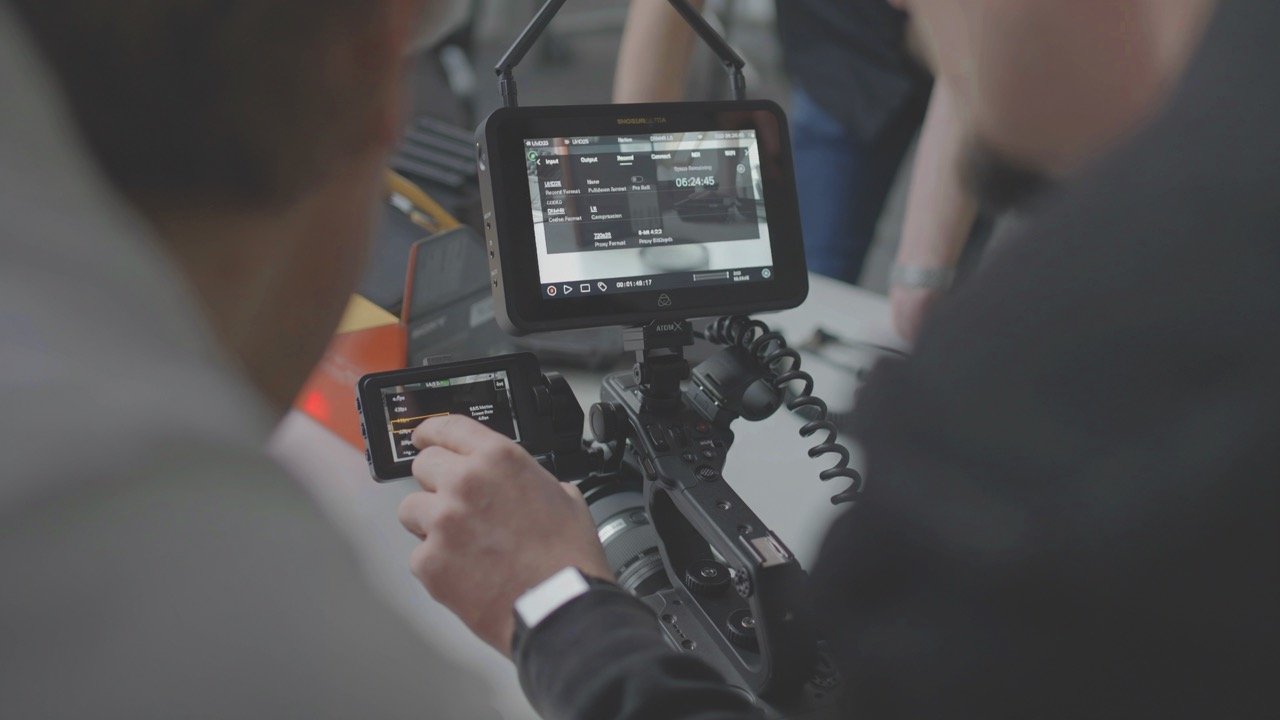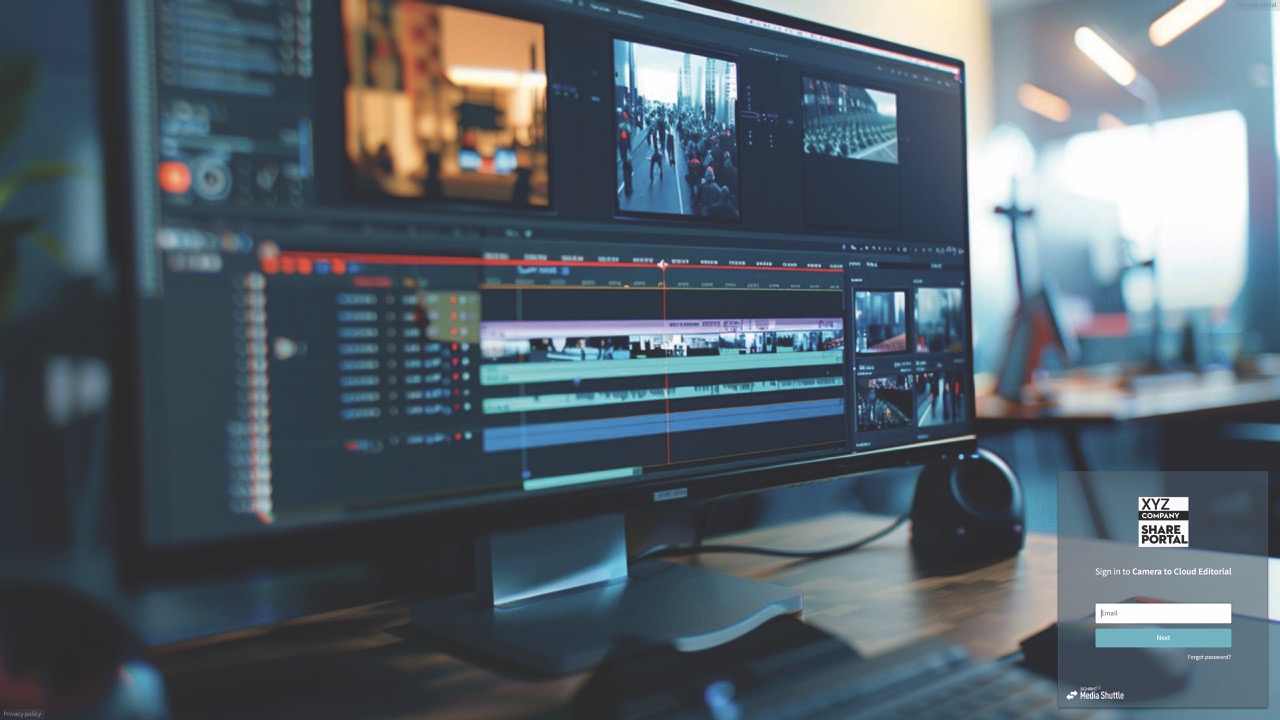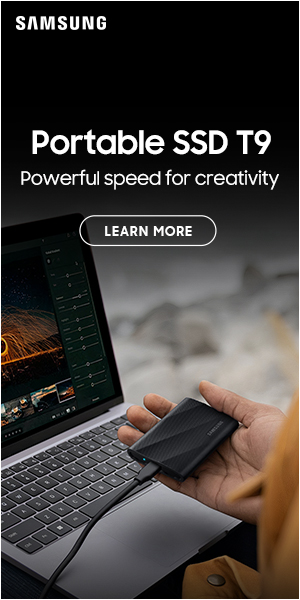
Camera to cloud with Adrian Pennington
Posted on Apr 4, 2025 by Admin
As C2C gradually becomes the norm, Adrian Pennington speaks to key players for the inside track on where the tech is headed
The transition to remote production cloud workflows jumped during Covid-19, when camera-to-cloud (C2C) solutions were essential for keeping isolated teams in sync, whether it’s shooting on a second unit down the road or sitting in an edit suite thousands of miles away.
“C2C workflows continue to evolve as more camera manufacturers enable immediate access to proxy and original camera footage as it’s captured,” says Chris Fournelle, director of content and marketing production at Signiant. “However, adoption remains limited due to several key challenges. Many cameras still rely on recording of media to cards rather than directly to accessible hard drives, which restricts seamless access. Internet connectivity — especially out in remote locations — can also be a big challenge for C2C.”
C2C speeds up the content creation process by reducing the time it takes to get from acquisition to post-production. By enabling dailies to be created with original camera footage – not just proxies – while filming is still in progress, productions can potentially eliminate a full day of turnaround time, says Fournelle.
“There’s no waiting around for hard drives to be shipped or files to be copied from one device to another; files can be uploaded directly to the cloud from the camera so that editors and remote stakeholders such as producers, directors, even clients, can start viewing or working on the material immediately,” explains Steve Wise, marketing director at Atomos. “There are also some nice fringe benefits in terms of reducing carbon footprint.”
The obvious benefit for larger teams is access to a centralised repository of assets, regardless of location or platform. The speed at which content can pass through post-production is dramatically increased because, as soon as the assets land, they can be edited, commented on, approved and iterated.
“For everyone else, from single owner-operators to broadcasters, there’s the convenience of not having to manage physical media, maintaining a robust, automatically backed-up workflow and inherent organisation of assets,” says Patrick Holroyd, CEO and co-founder of mobile and cloud tech company MAVIS. “Files can be automatically associated with their source device and categorised by date or content type, all while residing on infinitely large storage.”
Holroyd likens camera-to-cloud adoption to the transition from tape to tapeless: “We saw a gradual adoption of new technology as people learnt about the benefits and organically replaced their existing equipment and workflows.”
Wise calls growth steady rather than exponential. “There are a lot of moving parts. More and more cameras are capable of being network-connected, and an Atomos monitor-recorder will connect any HDMI or SDI camera, but Wi-Fi hasn’t always been the most stable means of transmission. This has probably been the biggest obstacle, but the technology has improved leaps and bounds in just a few years.” Consequently, convenient and reliable connectivity is key to growth, but this doesn’t preclude working on location.

C2C is more likely to be found in studios where cameras and recorders can be plugged directly into broadband networks or routed over 5G, but on- location C2C workflows are more practical than they’ve ever been. For larger productions, bonded solutions and low Earth orbit satellite connectivity provides a level of guarantee, even in remote locations.
“Bonded cellular solutions from companies like Sclera Digital and portable kits from Starlink can easily fit in a backpack, providing high-speed, low-latency internet on the go,” says Wise.
Atomos claims to have pioneered the concept of the monitor-recorder – a field monitor that also records high-res ProRes files to cheap, removable storage. Three years ago, it added Wi-Fi connectivity alongside an online service that integrated with all leading C2C platforms, including Adobe’s Frame.io, Sony Ci Media Cloud, MediaSilo and Dropbox Replay. “We also developed a new progressive file-transfer technology so that the upload of the file starts as soon as the camera starts recording,” Wise adds.
“If the connection is lost during the upload process, file upload starts again as soon as the connection is restored, ensuring no data is lost.”
German reality TV series Bauer sucht Frau (best translated to Farmer Wants a Wife) used Atomos’ Ninja Ultra and Shogun to send camera proxies directly into ProSiebenSat.1 PULS 4 headquarters in Vienna, saving time on the previous route of sending dailies via physical hard drives.
Similarly, rather than physically running cards between the editors and camera operators, Bauer Media fed content from the red carpet at the BRIT Awards into Frame.io for real-time highlights editing via Atomos Shogun plugged into wired Ethernet as well as Wi-Fi.
For smaller productions, 4G- or 5G-enabled devices and mobile phones offer fast, reliable internet connectivity. Holroyd notes: “The mobile phone is one of the best-connected devices filmmakers have, and will increasingly become integrated into workflows.”
The MAVIS Pro Camera app, launching at NAB, will marry the power, portability and innate connectivity of the iPhone with Frame.io. “We will support fast, progressive uploading to the platform,” Holroyd says. “For other platforms, we are launching MAVIS C2C, a service that provides progressive uploads to Sony Ci, MediaSilo, Amazon S3 and Grass Valley Framelight X, unlocking the iPhone for larger teams capturing content for news and social.”
There are wrinkles in some C2C workflows that users should be aware of. Even in studio environments, many software solutions are limited, requiring media to be stored in their own cloud storage, which doesn’t always work for production teams, according to Fournelle.
“Teams need the flexibility to get content immediately off any camera as it’s being captured and to deliver that content to any private or public cloud storage,” he says. “Perhaps the biggest hurdle is workflow inertia — filmmakers trusting their established processes and being reluctant to adopt new methods, even when the benefits are clear.”

The practicality of C2C on location depends heavily on high-speed internet access, especially when dealing with large 4K, 6K, 8K or even 12K media files. “Slow connections or network interruptions can undermine the entire workflow,” explains Fournelle. “Reliable connectivity, efficient transfer protocols and scalable infrastructure are essential for this approach to be viable on-set.”
Signiant’s accelerated transfer technology, support for growing files, proxyless play and metadata support ‘make it the go-to platform’ for media professionals in this area. “Beyond simply moving media to the cloud quickly, it’s just as critical to be able to instantly access, review and interact with that content — whether on-set or from anywhere else in the world,” he says. “With Signiant, media professionals can do just that using a standard web browser, eliminating the need for specialised desktop tools to interact with or transcode Raw media.”
Sundance Film Festival has used Atomos C2C workflows for coverage since 2022. Atomos has also seen an uptake in sports, with the NBA and NHL using C2C to feed their social media channels. And, more recently in Europe, FC Bayern Munich and MotoGP have experimented with C2C.
“C2C has already evolved,” Wise says. “In its early stages, it mirrored a typical offline/online workflow; simultaneously capturing two versions of the footage: a high-quality Apple ProRes or Avid DNx hero file and a lightweight H.265 HEVC 2K or 1080p proxy file that gets instantly uploaded to the cloud. The two file versions share the same file name and timecode reference, enabling a rough cut to be made with the proxy file in the cloud that subsequently can be auto-conformed on terra firma with any NLE.
“But for social media platforms and for breaking news on conventional broadcasting services, what used to be considered ‘proxy’ video quality is now perfectly usable. For example, an HD/30p H.265 proxy file recorded at 10Mbps would be perfectly acceptable online.”
Holroyd thinks storage will become permanently integrated into the capture device and, thanks to C2C, physical media will become a thing of the past. “With faster upload speeds, content rich in metadata will flow directly into an AI editor or VFX generator with only final polishing and editorial decisions needing to be carried out by a human,” he claims.
Fournelle also expects camera manufacturers will normalise direct access to media across their camera range. “However, bandwidth alone isn’t enough. To truly capitalise on high-speed connectivity you need a software solution that can efficiently utilise all available bandwidth. The higher the bandwidth – or the greater the distance and network latency – the more critical this becomes.
“Without the right technology, even the fastest internet won’t guarantee the seamless transfer of large media files needed for modern workflows.” Faster, more reliable internet access facilitated by 5G and 6G would most certainly help. Insomuch as there is a comparison with the AI phenomenon, C2C can only get faster, cheaper and more reliable.
See how camera-to-cloud has developed by reading this article.
This story appears in the March 2025 issue of Definition








